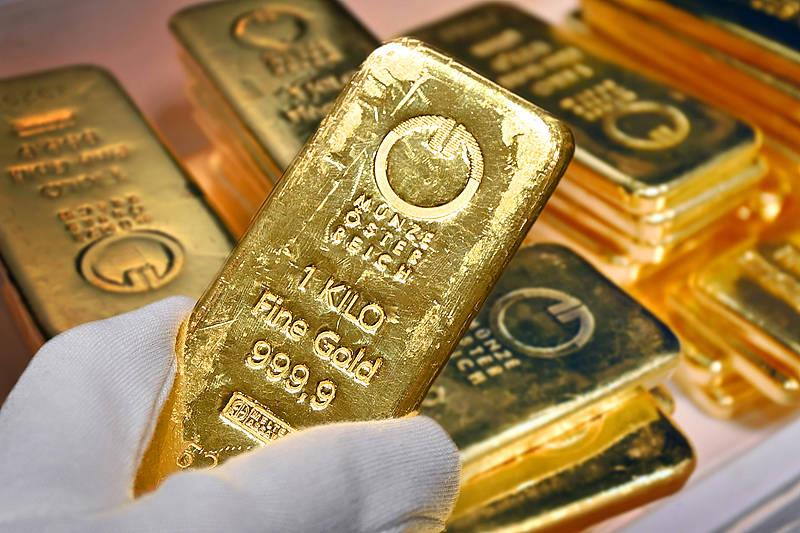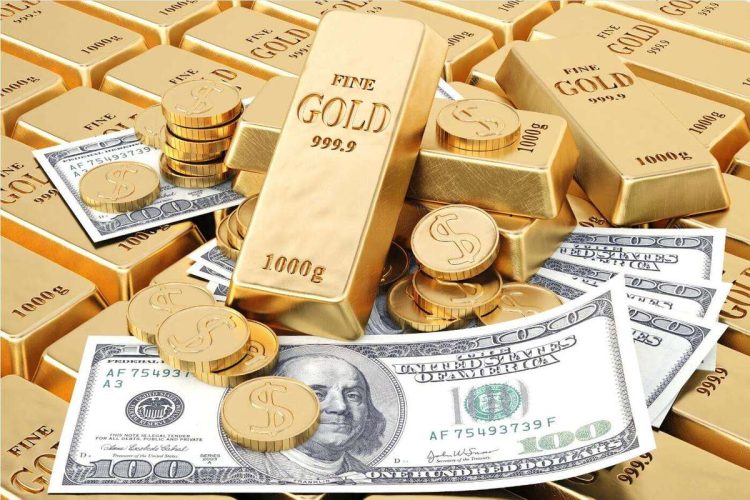Introduction
Over the last few years, the gold market has experienced significant price fluctuations that have intrigued both seasoned investors and the general public. Traditionally seen as a safe-haven asset during times of economic uncertainty, gold’s recent price behavior has defied expectations. While gold prices have historically been influenced by inflation, central bank policies, and geopolitical stability, modern forces—such as market speculation, the evolving global financial landscape, and the rise of digital alternatives like cryptocurrencies—are now reshaping how gold behaves in the market.
As investors look for safe havens amid inflationary pressures, interest rate changes, and geopolitical crises, many are asking: What is the true trend behind gold’s recent price volatility? Is gold still a reliable store of value, or is it being driven by factors that are less predictable? In this article, we will explore these questions in-depth, breaking down the factors behind gold’s price fluctuations and the market forces shaping its future.
Section 1: Understanding the Fundamentals of Gold Pricing
Before we dive into the recent price volatility, it’s important to understand the fundamental factors that traditionally influence gold prices. Gold has long been a symbol of wealth and security, but its price is influenced by several key variables:
- Global Economic Conditions
Gold has long been viewed as a hedge against economic instability. During times of economic recession, currency devaluation, or high inflation, demand for gold typically rises, pushing prices higher. The inverse is also true—when the economy is stable and growing, demand for gold can decrease, leading to price declines. - Central Bank Policies
Central banks play a significant role in gold pricing, both directly and indirectly. The price of gold often rises when central banks lower interest rates or engage in expansive monetary policy. This is because lower rates diminish the appeal of interest-bearing assets, making non-yielding gold more attractive. - Currency Movements
The strength of the U.S. dollar, in particular, has an inverse relationship with gold prices. A stronger dollar typically results in lower gold prices, as gold becomes more expensive for foreign buyers. Conversely, a weakening dollar makes gold more affordable and attractive, driving demand. - Inflation and Real Yields
Gold is seen as a hedge against inflation, with its value often rising when inflation erodes the purchasing power of fiat currencies. Real yields (the yield on bonds adjusted for inflation) also play a crucial role—when real yields are low or negative, gold tends to perform well. - Geopolitical and Market Sentiment
Geopolitical crises (wars, financial market instability, political turmoil) drive investors to seek the perceived safety of gold. During uncertain times, investors flock to gold as a way to protect their wealth, causing a rise in demand and price.
Section 2: Key Drivers of Recent Price Fluctuations in Gold
Over the past few years, the gold market has seen dramatic fluctuations. From the massive price spikes in 2020 during the early stages of the COVID-19 pandemic to the sharp declines in 2021 as the global economy began to recover, the reasons behind these fluctuations are multifaceted and complex. Let’s take a closer look at some of the key drivers behind these recent price shifts:
1. The Impact of COVID-19
The onset of the COVID-19 pandemic in early 2020 caused an unprecedented economic shock. Governments around the world injected massive amounts of stimulus into their economies, and central banks slashed interest rates. This environment created an ideal setting for gold prices to surge. In addition, uncertainty about the future of the global economy, coupled with fears of inflation, led to a surge in demand for gold.
- March 2020: As the pandemic took hold and markets plunged, gold prices briefly spiked, reaching an all-time high above $2,000 per ounce.
- Government Stimulus and Inflation Concerns: The billions in stimulus measures and the subsequent inflation fears in 2021 continued to support gold prices.
2. Global Inflation and Interest Rates
Inflationary pressures have been a constant topic of conversation, especially following the pandemic recovery period. Central banks, particularly the Federal Reserve, had been committed to keeping interest rates low, which made gold more attractive as an alternative to yield-bearing assets. However, with rising inflation concerns, central banks have been forced to re-evaluate their monetary policies.
- U.S. Federal Reserve Rate Hikes: As the Federal Reserve began to raise interest rates to combat inflation, gold prices came under pressure. Gold does not provide interest or dividends, so higher interest rates make other assets, such as bonds and stocks, more attractive.
- Stagflation Fears: The combination of high inflation and economic stagnation—often referred to as “stagflation”—has raised concerns about the stability of traditional financial markets, further boosting gold’s appeal as a safe-haven asset.
3. Geopolitical Tensions and the War in Ukraine
Geopolitical events, particularly the ongoing war in Ukraine, have had a significant impact on the gold market. Gold has historically been seen as a safe-haven asset in times of war and instability.
- Escalating Tensions in Europe: In early 2022, as tensions between Russia and Ukraine escalated, gold prices surged as investors sought refuge from market uncertainty.
- Supply Chain Disruptions: The war in Ukraine has disrupted supply chains, further driving inflation and bolstering demand for gold.
4. The Rise of Digital Assets and Cryptocurrencies
In the past decade, cryptocurrencies such as Bitcoin have emerged as a new asset class, sparking debates over whether digital currencies could replace gold as a store of value. While gold has traditionally been the go-to safe haven during times of financial uncertainty, digital currencies, particularly Bitcoin, have gained attention for their ability to hedge against inflation and provide an alternative store of wealth.
- Cryptocurrency Volatility: Bitcoin and other cryptocurrencies have experienced extreme volatility in recent years, but they continue to attract investors looking for alternatives to traditional financial assets. This could potentially divert some demand away from gold.
- Decentralization vs. Traditional Assets: The decentralized nature of cryptocurrencies offers advantages over gold, such as easier transactions and storage, though it remains to be seen whether they can truly replace gold’s long-standing role as a store of value.

Section 3: The Role of Institutional Investors and Market Speculation
Over the past few years, institutional investors have increasingly entered the gold market, buying gold-backed ETFs, futures contracts, and physical gold. The influx of large institutional investors has led to more market speculation and volatility. While these investors can drive the price of gold higher in times of uncertainty, their influence also contributes to some of the fluctuations seen in the market.
- ETFs and Gold Futures: Exchange-traded funds (ETFs) and futures contracts have made it easier for institutional investors to access gold without actually buying and storing the metal. These financial products have expanded the pool of gold buyers, but they have also contributed to price swings.
- Speculation and Short-Term Volatility: Institutional investors, hedge funds, and commodity traders often engage in short-term speculative activity, adding to the volatility of gold prices. While their actions may reflect larger market trends, they can also exacerbate price swings.
Section 4: The Future Outlook for Gold
Given the complex and dynamic forces driving gold’s recent price movements, it’s important to look ahead and assess the future outlook for the precious metal. What factors will continue to shape the market in the coming years, and how can investors navigate these changes?
1. Inflation and Interest Rates
The ongoing inflationary pressures will likely continue to be a major driver for gold prices in the short term. However, if central banks take a more aggressive approach to curbing inflation, raising interest rates further, gold may face downward pressure.
2. Geopolitical Instability
Gold will likely remain a key safe-haven asset during periods of geopolitical instability. Whether the crisis is economic, political, or military in nature, gold’s reputation as a hedge against uncertainty will continue to support its long-term value.
3. Digital Gold: Gold and Cryptocurrencies
The emergence of cryptocurrencies may not necessarily pose a threat to gold’s status as a store of value, but it does represent a shift in the way investors think about alternative assets. As digital gold (such as Bitcoin) grows in popularity, the two may coexist in an investor portfolio, depending on individual preferences.
4. The Role of Central Banks
Central banks will continue to influence gold prices through their policies. A shift in the strategy of central banks to accumulate gold in reserves or take action in response to future financial crises could significantly impact gold’s value.
Conclusion
The real trend behind recent price fluctuations in the gold market is a combination of long-standing economic principles and new, emerging forces. While traditional drivers like inflation, central bank policies, and geopolitical tensions continue to shape gold prices, modern developments—such as the rise of digital assets and institutional investor participation—are adding new layers of complexity.
As gold navigates the turbulent waters of global financial uncertainty, its role as a store of value and hedge against systemic risk remains intact. However, the factors influencing its price are becoming increasingly nuanced. For investors, understanding these underlying forces is crucial for making informed decisions in an ever-changing market.


















































